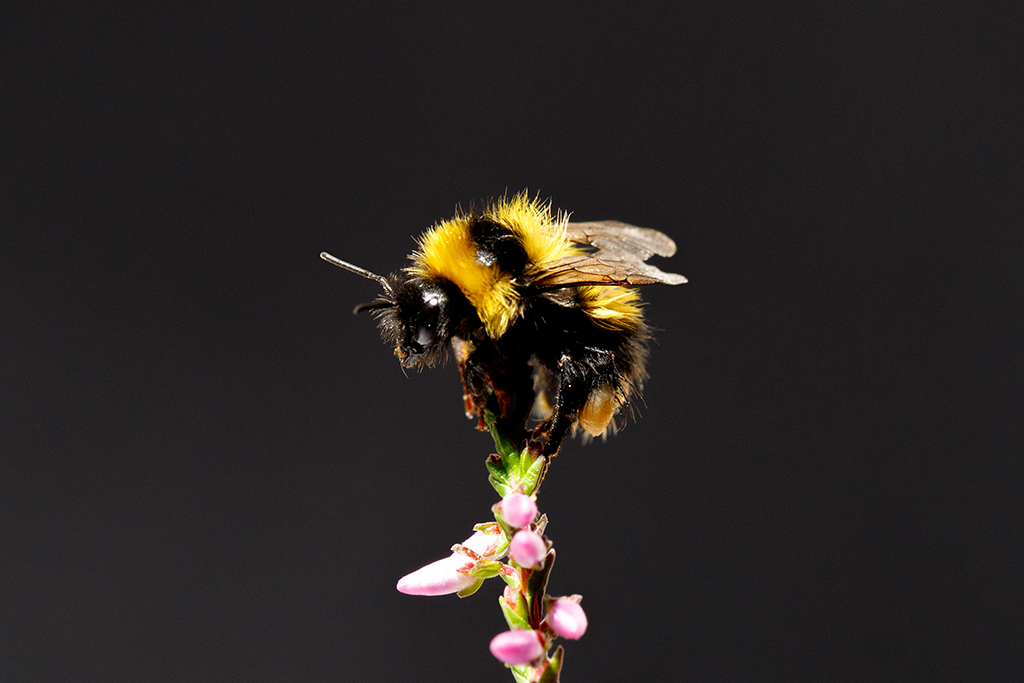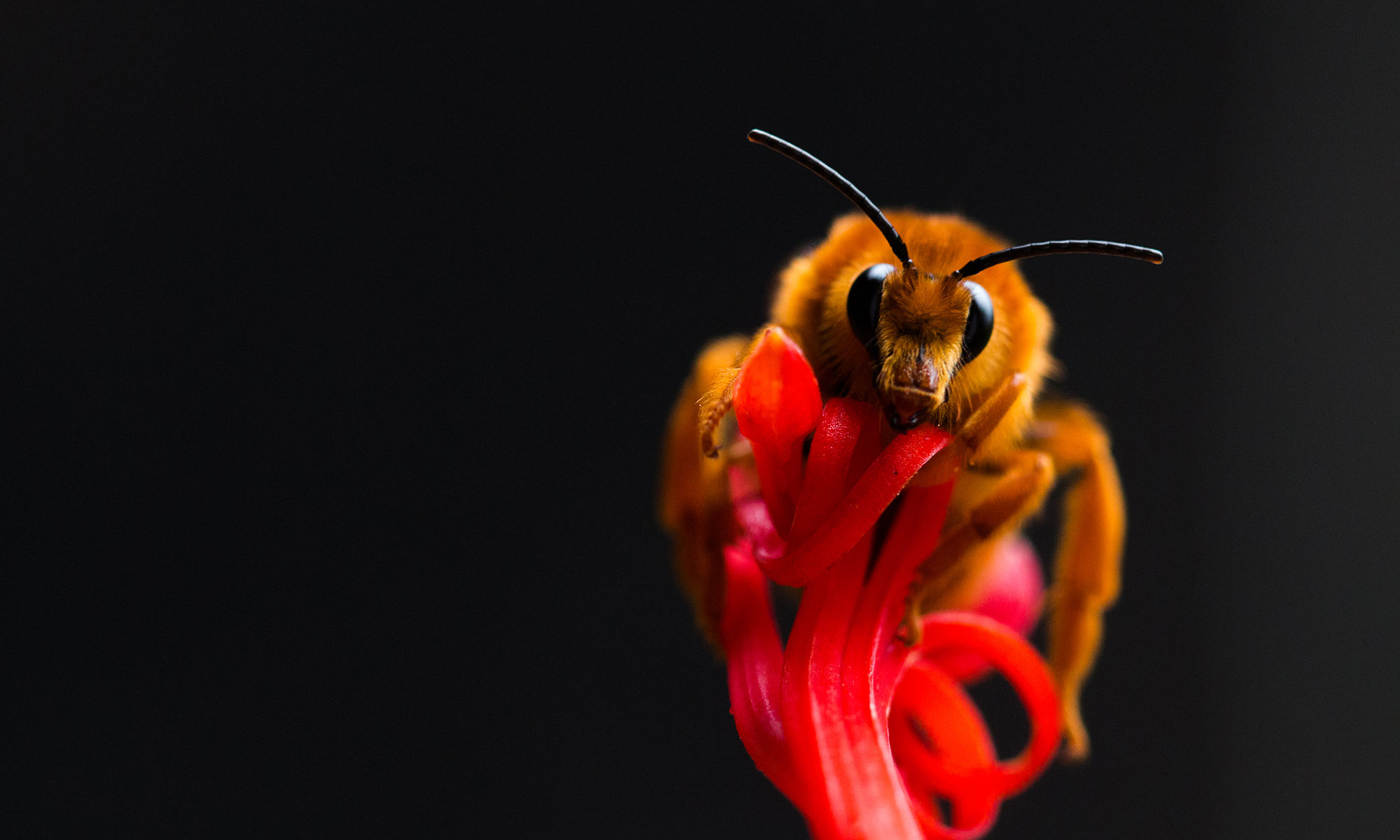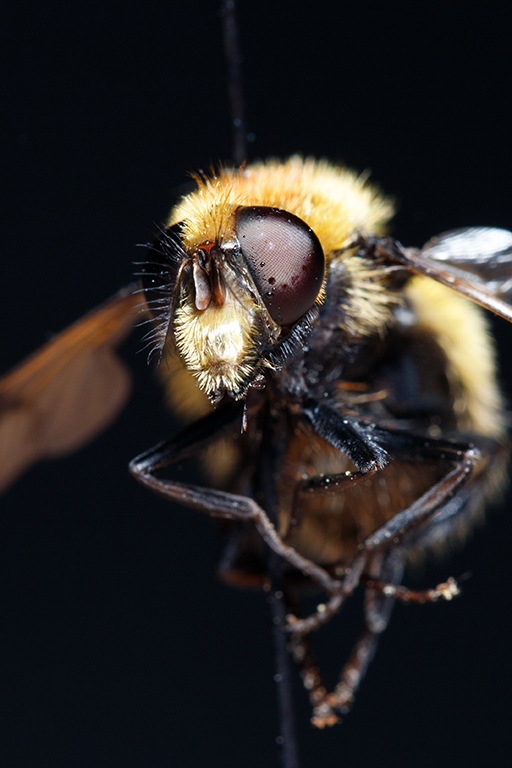Please cite as: Vallejo-Marin M & GC Vallejo (in press). Comparison of defence buzzes in hoverflies and buzz-pollinating bees. Journal of Zoology. https://doi.org/10.1111/jzo.12857 Read the paper here. Email me if you want a PDF copy.
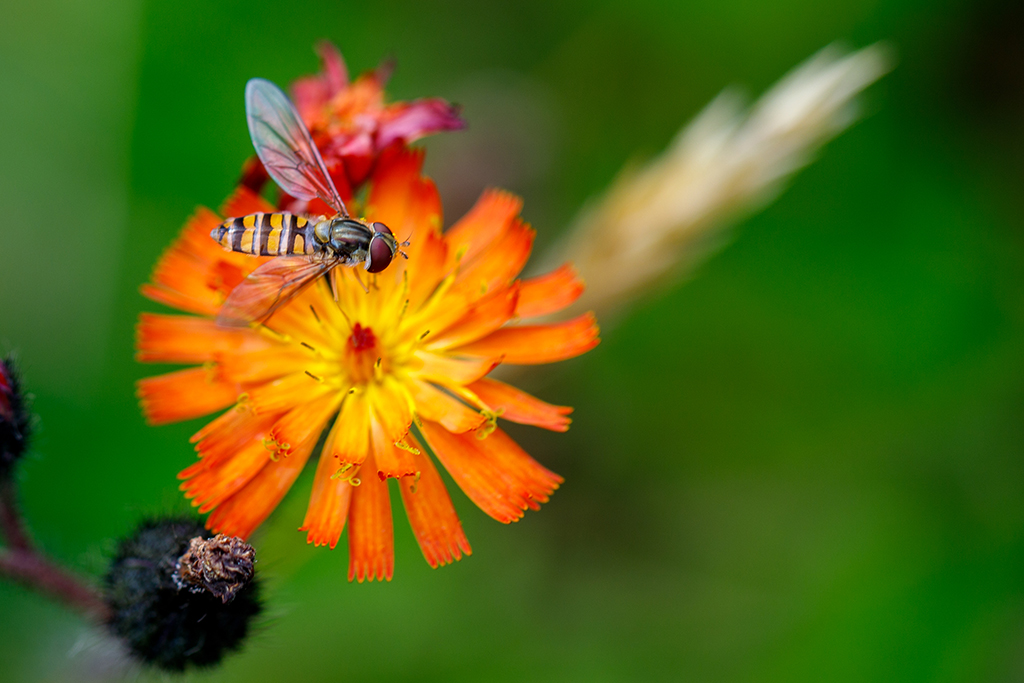
Buzz pollination is a striking form of pollination in which bees use their powerful thorax muscles—the same that power flight—to shake flowers and rapidly remove thousands of pollen grains. This summer we embarked on a quest to answer a simple question: Why flies do not buzz pollinate? [Read the full paper here].
Among the precious resources that flowers offer to their pollinators, one of the most important ones is pollen. Pollen is rich in proteins and bees and some flies rely on pollen grains to mature their sex organs, nurture their developing eggs, and provision their larvae. In the quest for pollen, bees and flies have evolved diverse morphological and behavioural adaptations to obtain and collect pollen grains, including feather-like hairs, pollen baskets and many others.
One of the behavioural adaptations evolved by pollinators is the capacity to buzz flowers to remove pollen, something that is often called sonication due to the loud sound that these floral buzzes produce. This pollination buzzes are produced by the same muscles that power flight. Typically, a buzz-pollinating bee grabs the pollen-carrying anthers with its mandibles, curls the body around the antrhers and begins rapidly contracting its thoracic muscles. The vibrations transmitted to the flower result in the ejection of thousands of pollen grains. In some specialised flowers with anthers that open only through small pores at their tip, buzzing flowers is the only way to efficiently remove pollen. Buzz pollination is relatively common in bees, having evolved in more than 11.000 species. In contrast, buzz pollination is extremely rare in flower-visiting flies, and only 1 out of 6,000 has been reported to buzz pollinate. Why is buzz pollination so rare among flies?
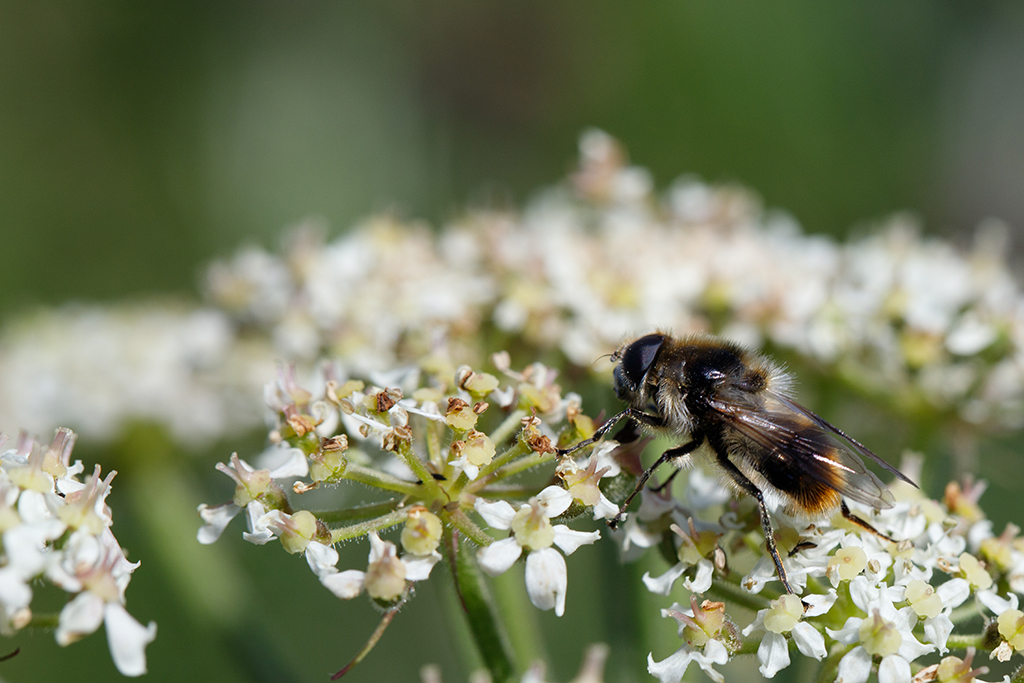
One of the hypotheses explaining why some insects do not buzz pollinate is that they are unable to produce vibrations of sufficient magnitude to remove pollen from flowers. Pollen release is a function of the amplitude or magnitude of the vibrations more than it is of frequecy or pitch. If flies are not capable of producing vibrations of sufficient amplitude, then there is no point in buzzing flowers. We called this the amplitude-limitation hypothesis.
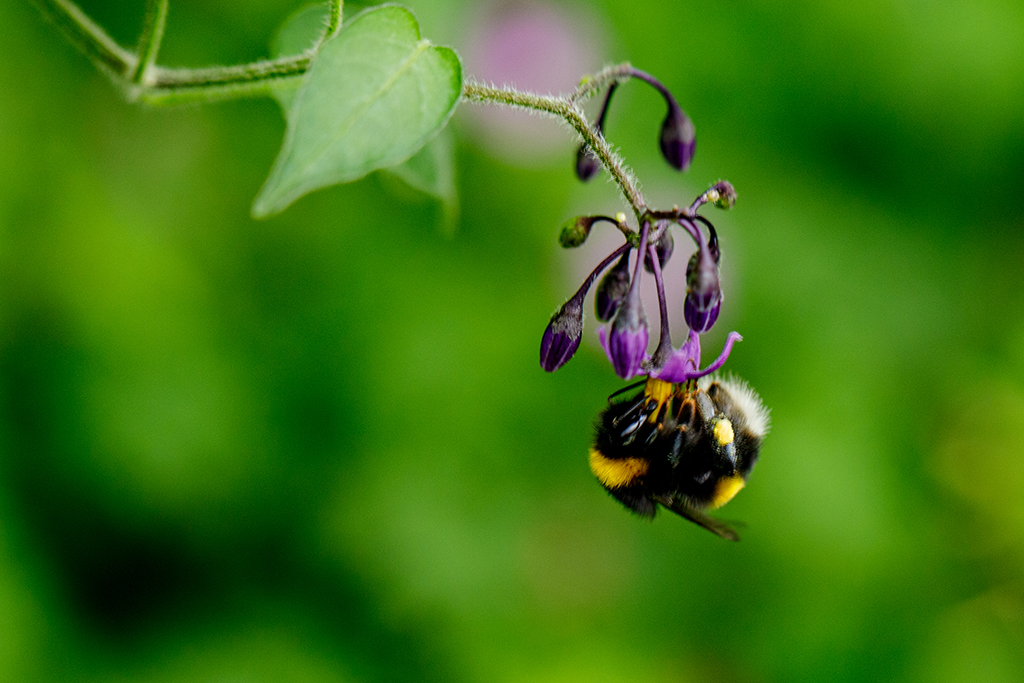
Testing the amplitude-limitation hypothesis
To test this hypothesis we set out to compare the vibrations produced by flies and buzz-pollinating bees. We used a type of vibration that is similar to floral buzzes: Defence vibrations. Both bees and flies produce buzzes when they are threatened or alarmed. These defence buzzes are produced with the same muscles as pollination buzzes. Importantly, defence buzzes can be induced by gently squeezing the insect or simply by breathing on it (some insects respond to the CO2-rich breath of potential predators).
We measured defence vibrations using a custom-made set up that consisted of a miniature (0.2 gram) accelerometer tied to a bamboo stick. The accelerometer converts vibrations into electrical signals that can then be recorded and analysed in a computer. Our goal was to measure vibrations in as many bees and flies as possible. Limits on travel during the summer of 2020, meant that we focused our efforts in Scotland. Exploring Scotland and some of its most beautiful islands in Orkney and the Outer Hebrides was not too bad.

Nearly 300 insects and 4,000 buzzes later
During our experiments we measured nearly 4,000 vibrations from about 300 insects in more than 40 taxa. The hoverflies we studied included some beautiful bumblebee mimics such as the large Volucella bombylans, Merodon equestris, and Cheilosia illustrata. The exploration of the Sottish islands also allowed us to study some bee species and forms that are rare or absent from mainland Scotland such as Bombus muscorum agricolae and Bombus jonellus. We also were lucky to find a nest of the rare great yellow bumblebee (B. distinguendus) in the Isle of Harris but decided against sampling these bees as they are of conservation concern. For each defence buzz we estimated the fundamental frequency and the peak acceleration amplitude (in m/s^2). For each insect we also measured its thorax which contains the muscular apparatus powering the vibrations used by bees and flies. Our findings are simple: After accounting for insect size, we found no difference in the amplitude of defence buzzes produced by flies and buzz-pollinating bees. In other words, our results provide no support for the amplitude-limitation hypothesis.
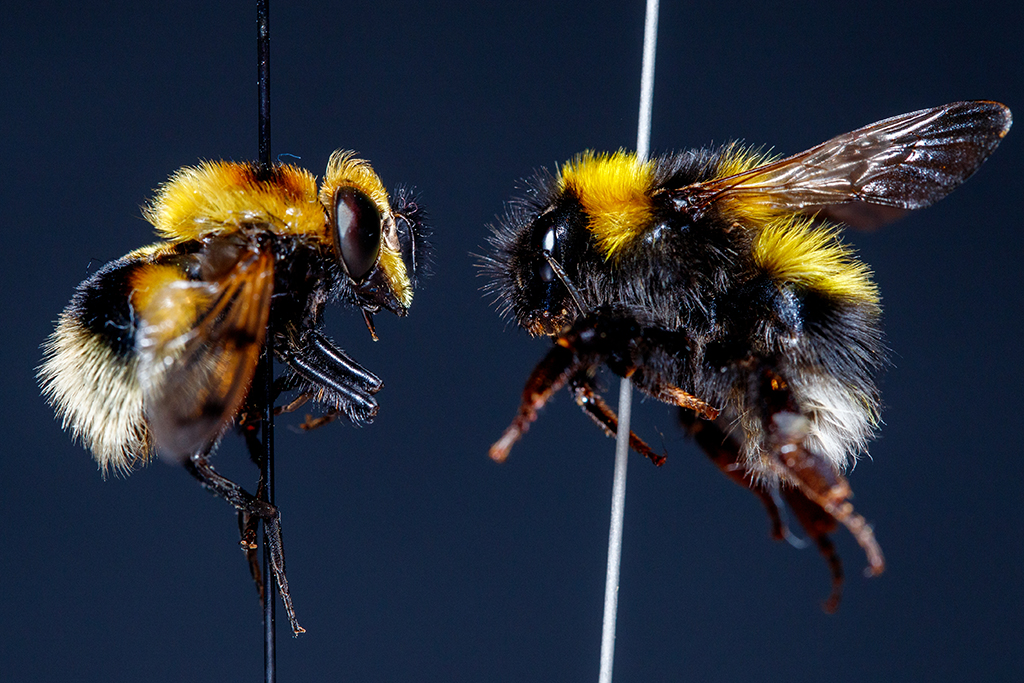
Other hypotheses: Pollen needs
The reason for why flies do not buzz pollinate remains mysterious, but in our paper we propose some hypotheses that could explain the lack of buzz-pollinating flies. Briefly, these hypotheses can be grouped in mechanical, behavioural and life-history explanations. The amplitude-limitation hypothesis is a mechanical explanation. Another mechanical-morphological hypothesis is that the lack of mandibles in flies prevents them from holding to the flower hard enough to effectively transmit vibrations–or from becoming dislodged from the flower while buzzing! Behavioural explanations such as an inability of flies to deploy buzzes across different contexts (eg, using defence buzzes in flowers), seems unlikely given the wonderful behavioural flexibility exhibited by many flies.
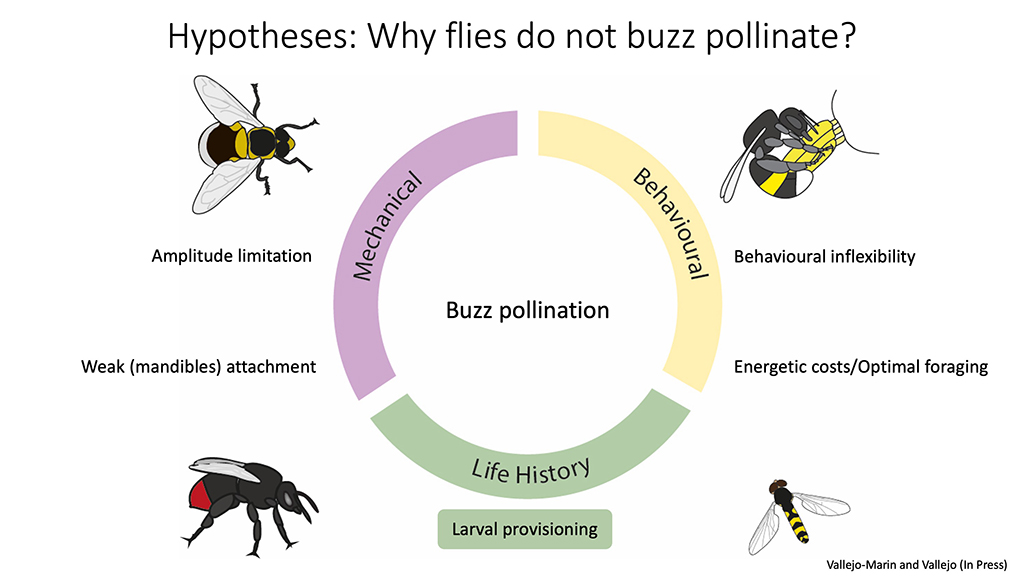
Finally, life-history explanations include the possibility that flies simply do not need to collect large amounts of pollen from flowers. Unlike bees, flies consume pollen on the flower and do not need to carry it back to a nest. Bee larvae rely entirely on pollen for protein as they develop, while many overfly larvae are predatory or use other sources of organic matter. We think that this type of explanations provide the ultimate answer of why flies have so rarely evolved the capacity to buzz pollinate, but these hypothesis await testing in future experiments.
Follow-up reading on buzz pollination
Pritchard, D.J. and Vallejo-Marin, M. 2020.Buzz pollination. Current Biology. 30: R841-R870.
